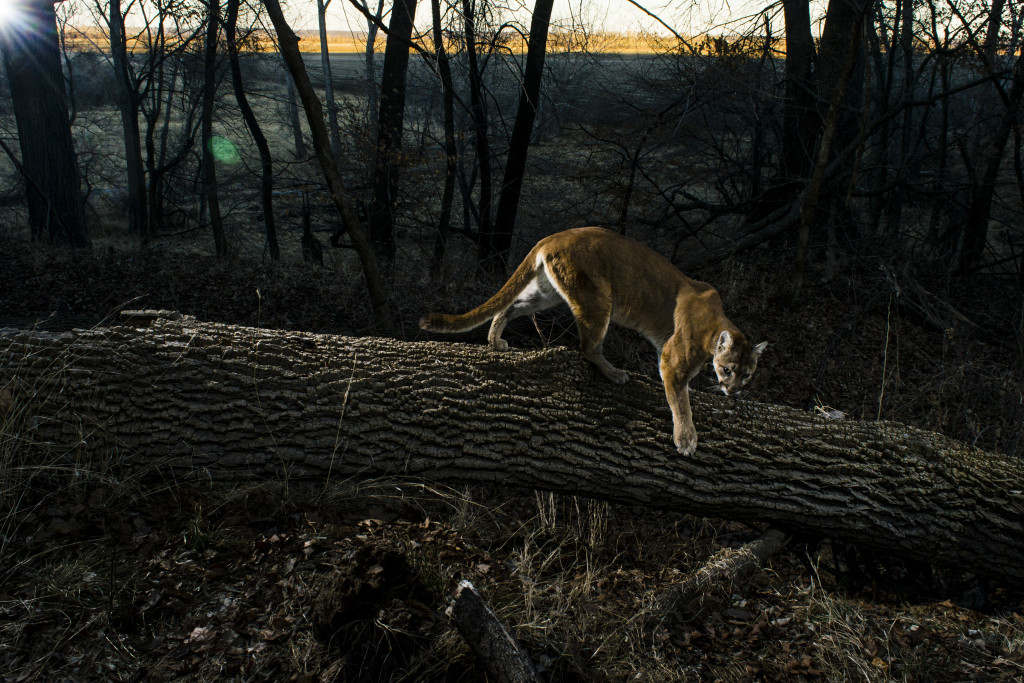
By Monica Macoubrie, Wildlife Education Specialist
Mountain lions, wolves, sharks and eagles, they have long been regarded as a few of the most stunning animals on Earth. As predators, they have inspired people by their strength, grace and ferocity, yet despite this fascination, predators have also been some of the most historically persecuted animals on the planet. They have been deemed villainous when they kill or injure livestock, threaten human safety, or cause economic damages. The motivation to remove predators is easy to understand, but what if the cost of removing predators is higher than keeping them around?
Life springs from the bottom up: Plants — or producers — capture energy from the sun, which feeds herbivores, which then become prey for mesocarnivores (mid-size predators, such as raccoons and foxes), and eventually, that energy reaches the top predators. While no one is downplaying photosynthesis or the role of plants, ecologists are becoming more convinced that ecosystems are indeed ruled from the top — predators. Predators, in fact, give life. Although this statement might seem like a paradox, as predators literally take life by eating it, new studies show that without predators, the trophic levels in ecosystems would inevitably collapse.
A predator’s main job is population control. Examples of predation include a mountain lion preying on mule deer in the Pine Ridge, or a bullsnake preying on the mice in your grain bin, or even a Wooodhouse’s toad eating the crickets in your garden. Looking closer, predators do much more than just pest control. Not only do predators prey upon the weak, sick and injured, they also keep ecosystems healthy. Predators could provide erosion control and increase the organism diversity in their area.
Without these top predators to control prey populations, prey species will move beyond the carrying capacity of their environments. Carrying capacity is the number of organisms an ecosystem can support without being degraded. If prey populations were left unchecked, they would decimate the populations of smaller animals and plants. As these species then decline, the organisms that depend on them will also decline. This causes a domino effect that could push populations and habitats beyond the point of recovery. Scientists call this process a trophic cascade. Although it might be too much of a stretch to call predators the guardians of native flora, in cases like this one, top predators actually aid the survival of many prey species and increase plant diversity.
Soil erosion is a geological process where soil, rocks and sediments are worn away over time. This process can be sped up by disappearing vegetation or human impacts. For example, if left unchecked, ungulates can slowly eat away vegetation, leaving vulnerable top soil exposed and barren — one inch of topsoil takes around several hundred years to develop. Without vegetation in place to keep soil stable, river banks can’t be maintained during periods of high-water flow. This could lead to channel widening and further erosion, leading to increases in summer water temperatures, shallower streams, increase in sediment runoff and even the destruction of important fish-rearing habitat.
During the short history of the United States, many top predators, such as mountain lions and wolves, were largely wiped from their historic ranges due to trapping, hunting and poisoning. There were even government campaigns established to eradicate these so-called “pests.” In places where these predators have been extirpated, the plant community became drastically altered and even, in some places, devastated.
Through prey population control, predators help biodiversity thrive in their respective areas. Their presence is critical to maintaining healthy ecosystems. Many predators, however, are threatened and/or on the verge of extinction today. A proactive science community and robust conservation programs will help ensure a positive future for these species.
